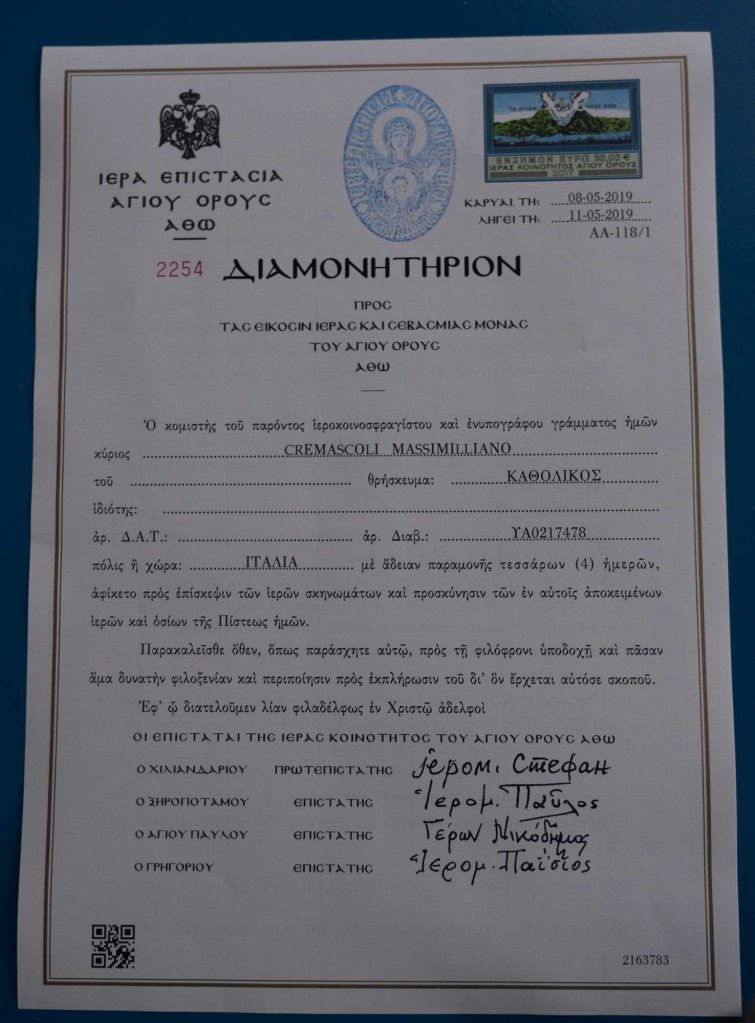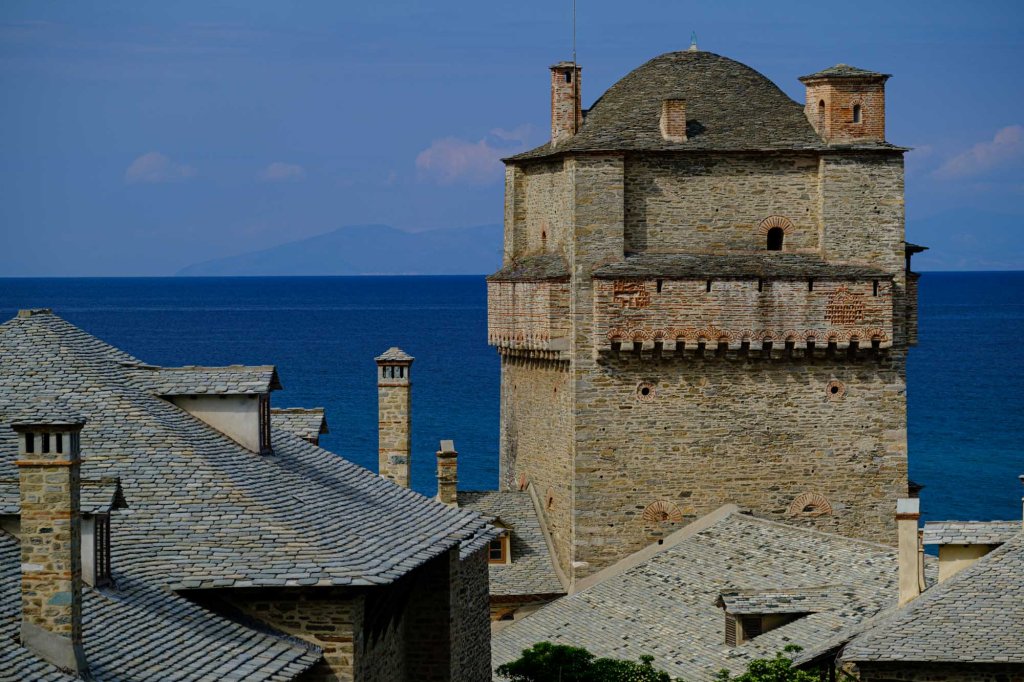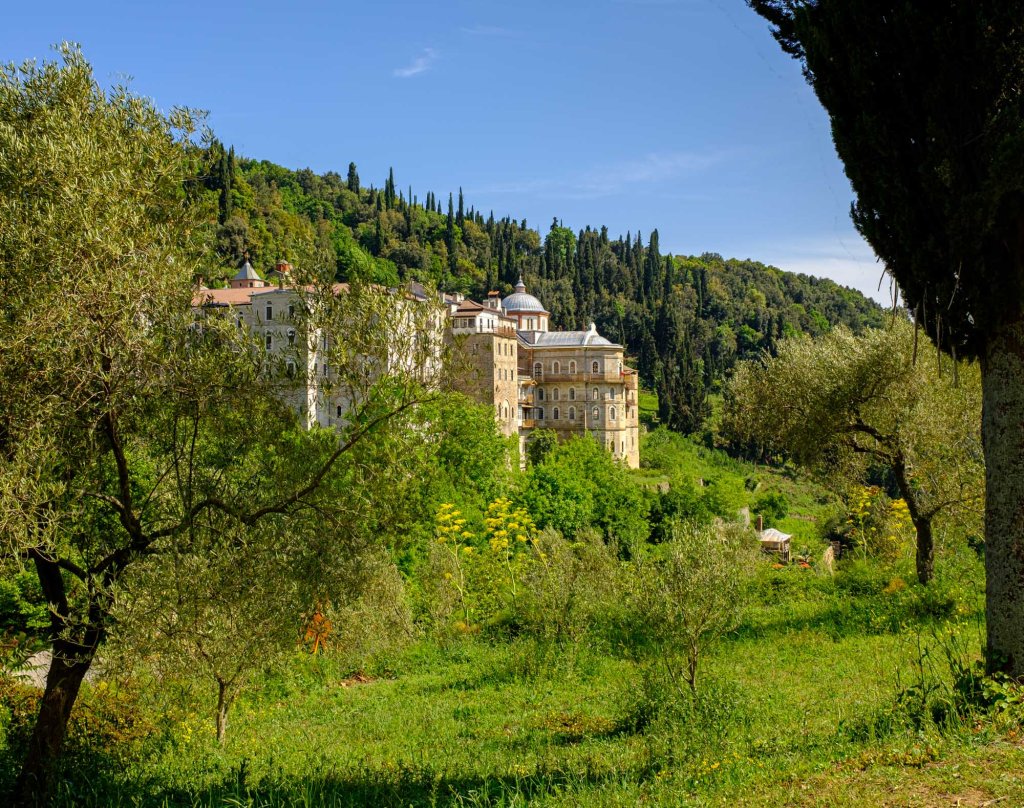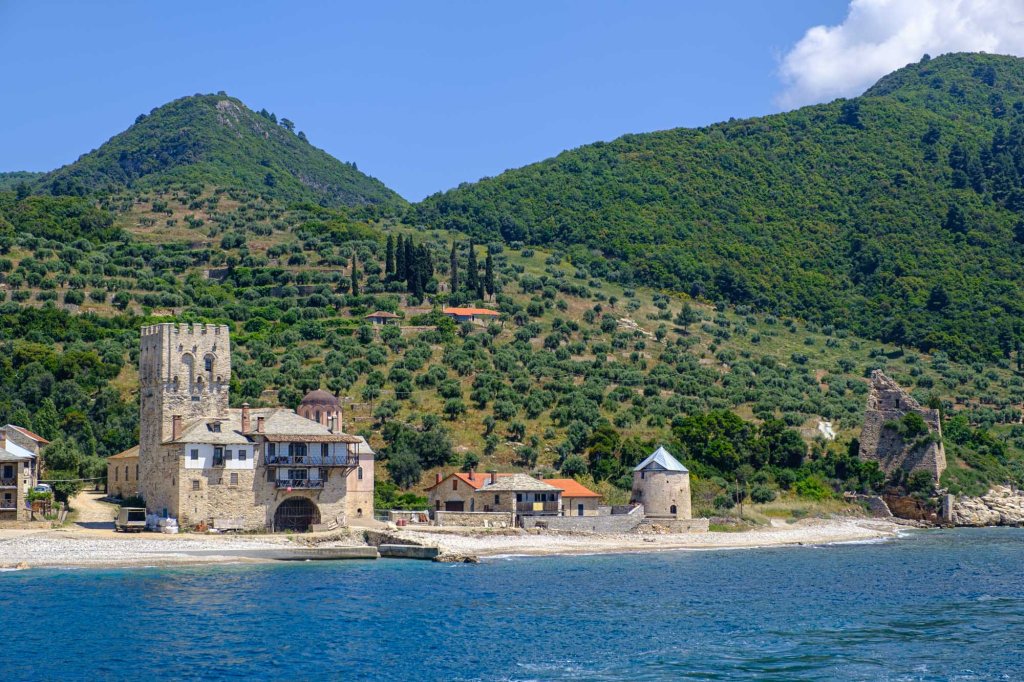
Today I’ll take you to a place from another world; it’s a remote peninsula in northern Greece which for millions of orthodox is the most sacred spot on earth. It’s called Mount Athos and has probably changed less over the centuries than any other inhabited place on the planet.

Mount Athos is an autonomous self-administered region within the territory of Greece. Access to the peninsula is granted to male visitors only following a request to the Pilgrim Office in Thessaloniki at least six months in advance.

Only ten nonorthodox and 100 orthodox pilgrims men are admitted daily once you’ve taken your prized and printed permit in the office of Ouranopoli. This permit called “diamonitirion” allows you to stay for three nights in the monastic Athos and you can expect free accommodation and food for only one night at the time in one of the 20 monasteries which dot the peninsula. You must also phone to the monasteries and reserve specific nights well in advance.




Of those 20 monasteries, there’s a Russian one, a Serbian and a Bulgarian, the other 17 are all Greeks. Women and female animals (except birds) are still refused access to Athos; bar the Virgin Mary here no other woman is permitted to even set foot on, it’s been like that for more than a thousand years!!!

Land entry is prohibited between secular and monastic Athos. Boats to the peninsula depart from the ports of Ouranopoli with connections to the monasteries further south in the small port of Dafni.
It wasn’t long before the first monasteries come into view and I thought I’m sailing to Byzantium to a fantasy land of castles, palaces, fortresses with dazzling religious architecture as well to a pristine forested interior dominated in the south by the bulk of Mt. Athos (2033m). There’s nothing on this 130 square miles peninsula other than monasteries and monks….nothing.

The first day I visited the Georgian-founded, west coast monastery of Moni Iviron, which has the feel of a medieval city and it’s one whose architecture is most remarkable. The refectory where I have had the “pleasure” to dine is truly gorgeous with 10th-century frescos and 10 meters long marble table where monks and pilgrims alike share the food offered, the religious silence broken only by the liturgy of a monk. Both lunch and dinner last less than 10 minutes with very simple food offered; no meat only bread, olives, eggs and some wine. The monks try and manage to be self-sufficient, they grow their fruits and vegetables.


The second day I was in Moni Agiou Pavlou on the west coast, under the looming Mt. Athos, with some patches of snow even in the first decade of May. The monastery seems a fortress made to repel pirates more than a place of worship but the setting and the architecture is magnificent. The last day I visited the Bulgarian Moni Zografou where nonorthodox were not properly welcome, following a massacre by Christian crusaders of some monks during the 12th centuries, I tried to convince the abbott that I was not involved but it did little to deter his skepticism. The monks on Mount Athos conduct a spartan way of life, no television, newspaper or Internet; here the life of Christ is experienced in a genuine way and this doesn’t happen in many other places in the world; the depth of their devotion defies description. They come here from the world over and do everything they can to keep what they call the world far away. All of the pilgrims in the peninsula come from the Balkans, Romania, Bulgaria, Ukraine, Russia, the Caucasian republic of Armenia and Georgia, as well as Greece of course; so you end up being the only westerner around.


The rules concerning photography around and inside the monastery are a somewhat of a mixed bag: some allow you to take photos of the courtyards and not inside the churches or the places of worship others were more strict whereas photos of the inner courtyards were also prohibited; of course video and photos of the monks were totally banned.

I admit that after spending three days in the peninsula I was more than glad to come back to “normal” life and what’s best than spending an afternoon in one of the stunning beaches of the Halkidiki peninsula – the small island of Ammouliani – which is 5 minutes ferry from a small jetty north of Ouranopoli? After this very “cold” dip in the beach of Alykes, the return to Thessaloniki and their succulent tavernas was even more welcoming.



